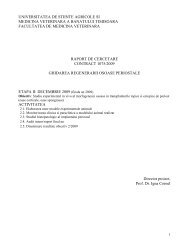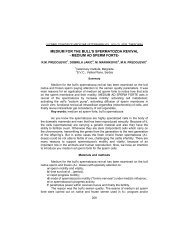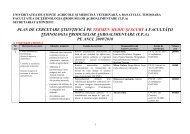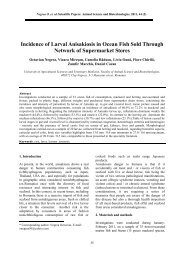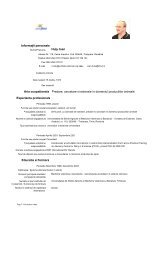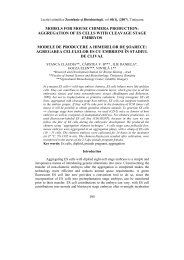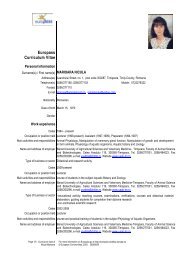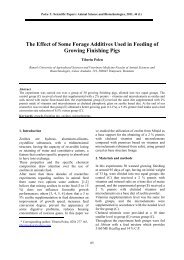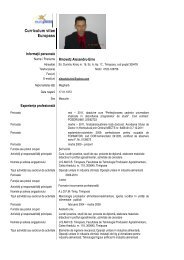journal of linguistic studies
journal of linguistic studies
journal of linguistic studies
Create successful ePaper yourself
Turn your PDF publications into a flip-book with our unique Google optimized e-Paper software.
2. MATERIAL AND METHODS<br />
The analysis <strong>of</strong> political interviews has so far been conducted mostly within the<br />
framework <strong>of</strong> conversation analysis. In this tradition, Clayman (1991) and Martinez<br />
(2000) define the sequential structure <strong>of</strong> news and political interviews respectively and<br />
their findings serve as the basis for our model. However, we combine this methodology<br />
with the principles <strong>of</strong> genre analysis (Swales 1990; Bhatia 1993), which is usually applied<br />
in the examination <strong>of</strong> written genres due to the structuredness <strong>of</strong> written communication.<br />
What allowed for this type <strong>of</strong> methodology to be employed here was the institutional<br />
nature <strong>of</strong> broadcast political interviews.<br />
An interview opening is basically a preliminary transaction (the term used by Francis<br />
& Hunston 1992), while the rest <strong>of</strong> the interview is carried out through medial<br />
transactions (topic cycles), which end in a terminal one (the closing <strong>of</strong> the interview). The<br />
preliminary and the terminal transaction are actually boundary transactions (the term used<br />
by Sinclair & Coulthard 1992). The type <strong>of</strong> exchange (a smaller unit which constructs<br />
transactions) employed in the openings, the introductions to topic cycles and the closings<br />
<strong>of</strong> conversations are typically called an organisational exchange (Francis & Hunston<br />
1992), as opposed to those used in the rest <strong>of</strong> the conversation, which belong to a<br />
comprehensive class referred to as conversational exchanges. In political interviews, a<br />
standard three-move structure <strong>of</strong> conversational exchanges (initiation + response +<br />
feedback) is commonly reduced to a two-move sequence, or an adjacency pair (initiation<br />
+ response or question + answer). The structure <strong>of</strong> the opening transaction is, however,<br />
much more complex. The aim <strong>of</strong> the present analysis is to pinpoint the elements <strong>of</strong> these<br />
in the terminology <strong>of</strong> genre analysis and explain their function.<br />
Such an analysis is based on a corpus made up <strong>of</strong> three groups <strong>of</strong> political interview<br />
openings. The British group <strong>of</strong> interview openings is made up <strong>of</strong> introductions to 11<br />
interviews taken from BBC1, BBC News, BBC World, Sky News, Channel 4 and the<br />
British edition <strong>of</strong> Euronews. The American group <strong>of</strong> interview openings has been taken<br />
from 10 interviews broadcast on CNN, CBS, ABC and Fox News, whereas the<br />
Montenegrin group <strong>of</strong> political interview openings consists <strong>of</strong> introductions to 8<br />
interviews broadcast on RTCG, TV IN and TV Vijesti.<br />
The methodology used for the identification <strong>of</strong> rhetorical structure draws mainly on<br />
conversation analysis and genre analysis. Below we identify the typical rhetorical<br />
structure <strong>of</strong> political interview openings in three different media cultures, which will<br />
allow us to draw conclusions <strong>of</strong> whether there exist any similarities.<br />
3.1 BRITISH DATA<br />
3. RESULTS<br />
The analysis <strong>of</strong> introductions to British political interviews pointed to a model which<br />
consists <strong>of</strong> the following obligatory elements, i.e. moves, as they are called in genre<br />
analysis:<br />
Move 1: Interviewee (IE) introduction<br />
Move 2: Headline<br />
Move 3: Initial component (adjacency pair: greeting-greeting)<br />
The pattern identified will be illustrated by example (1):<br />
70



